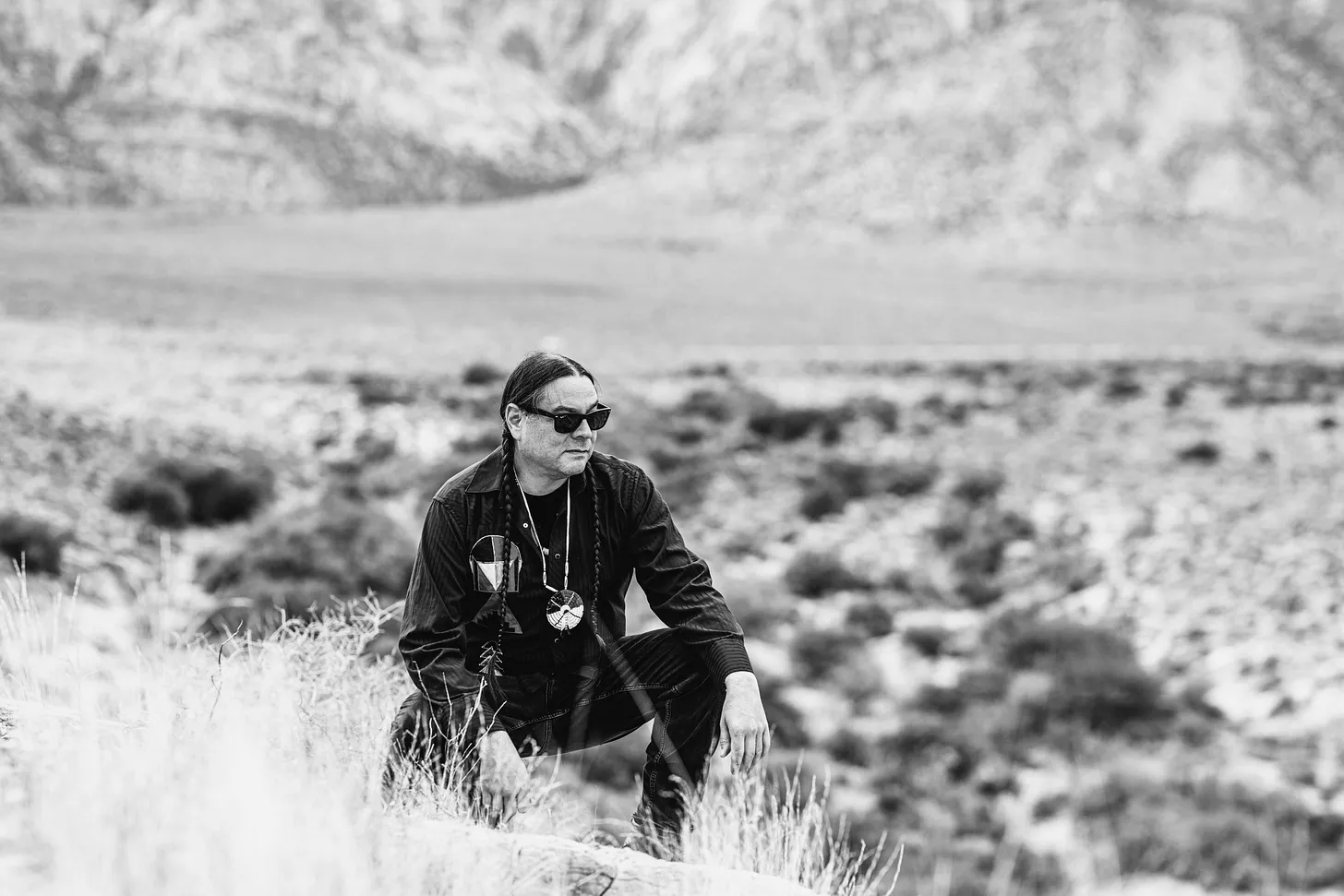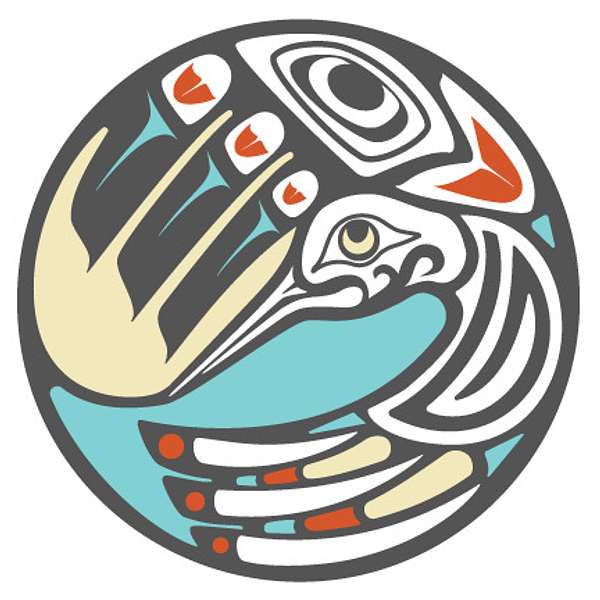LOTS IN NAGPRA NEWS - scroll for stories👇
Removed tribes, Ohio History Connection working together to return 7,000 ancestral remains
The Ohio Newsroom | By Adriana Martinez-Smiley, WYSO
Published January 21, 2025
At the Ohio History Center museum in Columbus, a recently redesigned exhibit details the Hopewell Ceremonial Earthworks and Indigenous cultures in Ohio.There’s scaled images of ancient rock art, models of Ohio’s environment centuries ago and excavated items used in Native American rituals.
But out of view are over 7,000 human remains from Ohio’s removed tribes that the Ohio History Connection possesses — one of the nation's largest collections of human remains and funerary objects.
Updates to a federal law known as NAGPRA have the Ohio History Connection and tribes on a countdown to identify and decide what to do with those remains.
The nonprofit is the state’s preservation hub and runs the historical museum. It’s actively consulting with the 45 tribes tied to the Ohio River Valley to repatriate these remains.
But Chief Glenna Wallace of the Eastern Shawnee tribe of Oklahoma said work’s been slow moving.
“Without question, this is a very delicate but crucial conversation and one that is very important to all of us,” Wallace said. “There is an urgency about it. It has been on the back burner for far too long.”
The urgency Wallace is referring to is due to the Native American Graves Protection and Repatriation Act, also known as NAGPRA. This law requires federally funded museums to return Native American remains and funerary objects to the tribes from which they were taken.
The law passed in 1990. But the U.S. Department of Interior didn’t enforce it until last year. That’s when it gave institutions five years to at least consult with tribal nations and identify what’s in their inventories.
“These changes to the department's NAGPRA regulations are long overdue and will strengthen our ability to enforce the law and help tribes in the return of ancestors and sacred cultural objects," Assistant Secretary for Indian Affairs Bryan Newland told ICT News last March.
Ohio History hosted last year’s Ohio Tribal Nations Conference in October. Most of the week was dedicated to consulting tribes to identify the remains and establish plans for re-burial, Wallace said.
“The executive director of OHC Megan Wood gave a very emotional and truthful acknowledgment at the Thursday night banquet that Ohio History needs to do better. And this is an area, particularly where they did not know how to proceed, and have now indicated that they will commit to greater resources,” Wallace recounted of the conference.
Stacia Kuceyeski, chief operations officer of Ohio History Connection, said it has three staff members to do the work. It’s not a process they want to rush, she said.
“We have a lot of remains to get through,” she said. “Our NAGPRA staff has to cross-reference what timeframe the (ancestral remains are) from with the geography of where they came from, and then who would have been on that land at that time period.”
Adriana Martinez-Smiley/WYSO/WYSO At the Ohio History Center museum in Columbus, a recently redesigned exhibit details the Hopewell Ceremonial Earthworks and Indigenous cultures in Ohio. |
Several tribal leaders say it’s good to finally see progress on returning their remains. But they also find it difficult to navigate these new requirements.
For one, tribal nations and museums foot most of the associated costs.
Federal grants are available for consultation, documentation and repatriation — but they’re so competitive, some refer to NAGPRA as an unfunded mandate. There’s also a cap on the amount of money institutions and tribes can apply for.
For the Miami Tribe of Oklahoma, four of the five people dealing with NAGPRA consultations aren’t paid to do the work, according to the tribe’s historic preservation officer Logan York.
“We are now on this timeline to make sure that our ancestors are treated with respect, but we have no more funding to make sure it's done correctly,” York said.
Besides a lack of funding and time, none of the tribes are based within Ohio’s borders.
The U.S government forcibly removed all Native American tribes from the state by the early 19th century. This has left a footprint for several historic Ohio tribes across the country.
Chief of the Shawnee Tribe Ben Barnes said it has to work within 26 states for NAGPRA consultations, and with only two staff members to do it.
“There's no single NAGPRA consultation that's typical. Some can take years. Some can take months, some can take weeks. Some collections are overseas. Some are split collections, some of the ancestors were loaned out to another institution,” Barnes said.
Chief Glenna Wallace said each tribe has their own approach to repatriation. But they are all looking for the same outcome.
“We need to unite those human remains with Mother Earth. Our belief is that that spirit is not at rest, that spirit is not at ease until it goes back to Mother Earth. And that has not happened. And that's what needs to happen,” she said.
Wallace said working to re-inter these remains is a challenge, but it’s a challenge each tribe is capable of doing.
**
Shawnee Tribe wants burial artifacts repatriated from Kentucky park. Lawmakers question process.
‘We know these are Shawnee people.’
By: Liam Niemeyer - December 19, 2024 | https://kentuckylantern.com/2024/12/19/shawnee-tribe-wants-burial-artifacts-repatriated-from-kentucky-park-lawmakers-question-process/
Pioneer Museum at Blue Licks State Park has housed jewelry and pottery removed from skeletons in graves that were unearthed in the 20th century, lawmakers were told Thursday. (Kentucky State Parks)
FRANKFORT — At the beginning of the year, the Kentucky Department of Parks published an online federal notice that state officials planned to return hundreds of Native American burial artifacts from a museum at the Blue Licks Battlefield State Resort Park in Nicholas County.
The department was following new federal regulations from the Biden administration under the decades-old Native American Graves Protection and Repatriation Act (NAGPRA), established to require institutions to repatriate Indigenous remains and cultural items excavated from grave sites.
According to ProPublica reporting, NAGPRA’s enforcement had been hampered since it was established in 1990 due to limited funding and institutions’ unwillingness to turn over such remains and artifacts. The revamped rules sought to speed up the process by giving more deference to tribes’ knowledge of their histories and regions in the decision-making process on reparations.
One of the three federally recognized tribes associated with the Shawnee people claimed the artifacts, and the artifacts are awaiting repatriation. But in the months since state officials started the process, locals with a group supporting the park have raised concerns and accusations about the transparency of the process — claims that Kentucky Tourism, Arts and Heritage Cabinet officials strongly refute.
The months-long conflict came to a head in a legislative committee hearing Thursday afternoon as state lawmakers sought to hear from both cabinet officials and Friends of Blue Licks State Park, whose concerns were supported by Sen. Stephen West, R-Paris, and Rep. William Lawrence, R-Maysville.
| Sen. Stephen West, center, and Rep. William Lawrence, right, are joined by local park supporters who have concerns about the repatriation process. (Kentucky Lantern photo by Liam Niemeyer) |
Shawnee Tribe Chief Benjamin Barnes, who sat in the back of the committee room at the Capitol Annex building but chose not to testify, told the Lantern he was willing to help the legislature on the issue and be a “friend of the park.” But he said his tribe has “been waiting since 1990 to complete this work” of repatriation.
“It’s been 34 years of waiting for compliance,” Barnes said. “We’re here to do that work now.”
The artifacts to be repatriated
Sarah Cronan, the general counsel for the cabinet, and Jennifer Spence, the curator for Kentucky State Parks, explained to lawmakers that the 274 artifacts from the park’s Pioneer Museum were originally bought by the state in 1949 from a man who helped found the museum.
Spence said that man, William Curtis, had obtained the artifacts either by excavating grave sites himself or obtaining them “from others who looted graves.” She said most of the artifacts come from the Fox Farm archaeological site in Mason County.
“During Curtis’s time, Fox Farm was often called ‘bony field’ because farming activities frequently disturbed burials, uncovering both Native American remains and the objects buried with them,” Spence said.
Spence, who showcased newspaper clippings from the early 20th century about the excavations, said Curtis in 1925 excavated 125 Native American remains at the Fox Farm site along with funerary items including pottery, discs, shells, gorgets, beads, pendants and more.
She said while items such as pottery may seem “unconventional” as funerary items, they were “traditional inclusions” in burials.
“Likewise today, in modern burials, we often include personal items such as jewelry, military medals, stuffed animals, books or photographs, items that hold special meaning, meaning to our loved ones,” Spence said.
Spence said Curtis also kept detailed records about the artifacts in his collection. Among the artifacts taken by Curtis from excavations that eventually ended up in the state museum, according to Spence:
- Two copper bracelets taken from the arms of a skeleton in a burial mound in Mason County.
- A string of twelve beads taken from the neck of a skeleton at Fox Farm.
- Shell gorgets from a grave at Fox Farm which were “found with two full grown skeletons lying side by side and a child apparently lying across them.”
Cronan told lawmakers that Congress enacted NAGPRA “in response to the digging up and looting of Indian graves all over the United States, including right here in Kentucky.” She pointed to looting that damaged an archaeological site in Union County in the 1980s.
Cronan also said the Kentucky Department of Parks received a demand letter in June from the U.S. Senate Committee on Indian Affairs, asking about the department’s current processes and pace of repatriations.
“The senator stated in this letter that delayed repatriation is delayed justice for the native peoples,” Cronan said.
Cronan pointed to potential civil penalties that Kentucky could be subject to if repatriations are delayed. She said the artifacts were currently in state custody awaiting to be collected by the Shawnee Tribe.
Accusations by local park supporters
But some state lawmakers voiced concerns shared by supporters of Blue Licks Battlefield State Resort Park that the cabinet hasn’t gone about the process in a transparent manner.
West, a Republican who represents Nicholas County in the Senate, said the Friends of Blue Licks State Park group hadn’t received information on timetables for when the repatriation was going to take place nor evidence associated with each artifact.
“What is the rush?” West said. “The cabinet doesn’t just represent the Shawnee Tribe, in all due deference to the tribe. They represent this commonwealth of Kentucky. The friends of the park are taxpayers of the state of Kentucky, and so all they’re asking for is transparency and an opportunity to ask questions.”
Paula Hunter, the chair of the Friends of Blue Licks State Park group, claimed that state officials were not being transparent with the reparation process because the original federal notice was posted online and not in local newspapers. Dennis Vesper, an archaeologist and former member of the Kentucky Heritage Council, also claimed that there was no “DNA evidence” that connects the artifacts to the Shawnee Tribe.
Hunter advocated for the artifacts to remain displayed at the state park’s museum. Cronan, the state attorney, said state officials asked the Shawnee Tribe multiple times if the artifacts could continue to be displayed, but the tribe declined.
When asked by Rep. Lindsey Burke, D-Lexington, if the assertions made by the Friends of the Blue Licks State Park were accurate, Cronan said she disagreed with the group’s characterization of the process. Cronan had told lawmakers earlier the cabinet wanted to “clear up the misinformation” about the cabinet’s efforts to repatriate the artifacts.
“Parks has communicated with all stakeholders about its repatriation efforts. This includes state legislators, federal congressional representatives, local county judges and local county attorneys and members of the Blue Licks Friends group,” Cronan said.
In committee testimony, West said the cabinet had sent letters to local county attorneys and county judge-executives but that “there were no personal meetings or anything of that nature.”
Barnes, the Shawnee Tribe chief, told the Lantern there was no way to get DNA connected to the artifacts “unless you violate the bones further.”
“Do we want to grind up your deceased grandparents? You know, I don’t think that’s appropriate,” Barnes said. “We know these are Shawnee people. We can trace it not just in history books. We can find it in archeological record.”
“We want to be sure that we’re involved in how the commonwealth tells the story of Indian country,” Barnes said.
The park is named for one of the last battles of the American Revolution, fought on Aug. 19, 1782, after the British had surrendered to Gen. George Washington at Yorktown, Virginia. British loyalists and Delaware, Huron and Shawnee warriors defeated Kentucky militia, some of whom were led by Daniel Boone, in a battle that lasted about 15 minutes, according to American Battlefield Trust.
MORE Kentucky
VIDEO: Native American artifacts dispute brought to Kentucky lawmakers
CARLISLE, Ky. (FOX 56) — A growing dispute over museum artifacts at Blue Licks Battlefield State Park’s Pioneer Museum is now before Kentucky lawmakers.
“These artifacts now belong to the Shawnee tribe,” Sarah Cronen, general counsel for the Kentucky Tourism, Arts, & Heritage Cabinet, told lawmakers on Thursday.
“We shouldn’t be in such a hurry to get rid of our precious artifacts,” Paula Hunter, chair of the Friends of Blue Licks State Park organization, told lawmakers at the same meeting.
Returning Native American remains and certain items they were buried with to their rightful owners is not a new debate. NAGPRA, the Native American Graves Protection and Repatriation Act, has been around since 1990 and is the reason why Blue Licks Park’s Pioneer Museum may be parting with 274 artifacts.
“274 items. Each item has its own case and its own evidence, and none of that was available or has been made available to the friends of the park to view. We think they deserve to see that,” Sen. Steve West (R-Paris) said.
Residents and leaders from the community, including those who have donated to the museum’s collection, dispute that the state’s tourism cabinet has worked transparently on the repatriation process. Thursday’s meeting was the first time it’s been brought before state lawmakers.
Cabinet officials say they are following the law and that the items affected only represent 12.5% of the museum’s total collection.
“We have asked the Shawnee Tribe more than once if they would be willing to allow us to continue to display these items, and they declined. These are grave goods. They declined,” Cronen said.
New federal regulations this year introduced a January 2029 deadline for returning these items that the Cabinet said could otherwise result in a $2.2 million fine. The lengthy deadline has the other side asking, “What’s the rush?”
Ben Barnes, Chief of the Shawnee Tribe, was present at the meeting and said the deadline is much shorter in the context of the many thousands of artifacts that have to be processed across the country.
“All of the projects—not just this one, but all of them. We can’t wait 1200 days and then do that work on all of these projects. They all have to be done as they come up, so we’re here to do that work now,” Barnes said.
Following the meeting, Barnes met with local lawmakers and the Friends of
Blue Licks organization for additional discussions.























No comments:
Post a Comment
Please: Share your reaction, your thoughts, and your opinions. Be passionate, be unapologetic. Offensive remarks will not be published. We are getting more and more spam. Comments will be monitored.
Use the comment form at the bottom of this website which is private and sent direct to Trace.